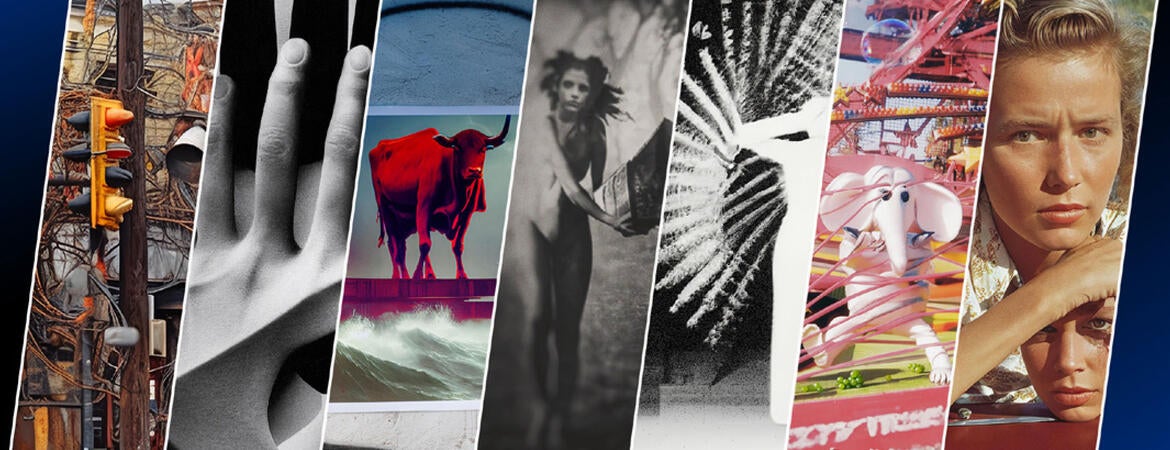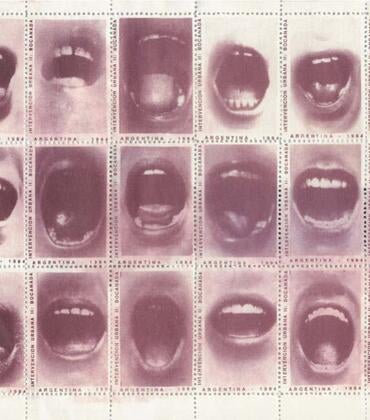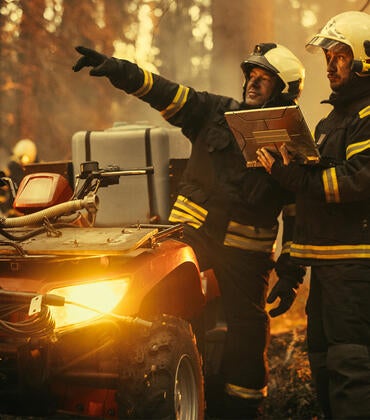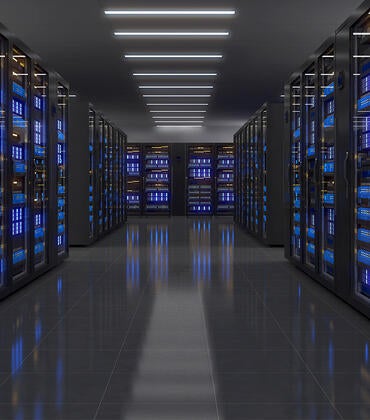
As you enter “Every Day We Must Make the Reality of This World: AI Post Photography,” you step from a darkened, industrial space into a bright white room that curves around to an exit. It’s like stepping into the Discovery One spaceship in Stanley Kubrick’s “2001: A Space Odyssey.” The unframed images give the impression of computer printouts tacked up in a teenager’s room or windows into a surreal space, a reality you recognize, but broken apart and reassembled in unsettling ways. A television endlessly streams colorful patterns of light that mold and morph into scenes such as shadowy figures and fire-like war dreams. A second runs a shifting grid of AI-generated workers’ faces.
If you are familiar with Italian Futurism, Dadaism, Surrealism, Neo-Dada, or Pop-Art and the use of collage – decoupage, photomontage or décollage, and activities like exquisite corpse, then you have an idea of what’s on the walls.
Implicit is what 19th century photographers struggled with as they manipulated a new technology to create images both realistic and surreal – spirit mediums loved to manipulate photos to dupe people out of money. Some thought the camera would usher in the death of visual arts. Critics asked whether photography was an artform or only another machine from which endless images could be generated and copied without any artistic effort or skill. In 1935, Walter Benjamin wrote in “The Work of Art in the Age of Mechanical Reproduction,” that a photograph lacks the “aura” of an original handmade work. Think about the difference between Van Gogh’s “Irises” and the Getty’s catalogue stock image — one you’d recycle without a thought. But what of its online image? We’re in the age of digital reproduction and the aura is from the monitor.
Text on the wall between sections guides viewers. We are given questions and responses. But as we continue, come up with our own. Is an image created by AI scraping images and combining them photography? Perhaps it is Artificial Photography? Is this art? Are those who create it artists? If a portraitist paints a portrait based on your instructions, are you an artist? What of copyright? Not just for the artists whose work is scraped from the internet, but those using AI?
A court ruled “a work of art created by artificial intelligence without any human input cannot be copyrighted under U.S. law.” Does this mean everything in the exhibition is free use? Is it OK to generate and display in a gallery a Frankensteinish image of a “real” person kissing a yak’s hindquarters?
Modernist artists used “found, often mass-produced, images and objects that the artists themselves don't make” to undermine the artist's presence. Now the artist has been subverted to a few text commands. It begs the question: Does Generative AI dream of electric sheep?
When you exit the brightly lit 21st century exhibition, you reenter the darkened industrial space. Against the far wall is a door, where you can access a large camera obscura, Latin for “dark chamber.” The camera obscura originated around 400BCE, and inspired scientists to create photography, and you are in the middle of it.
The exhibition continues at the California Museum of Photography through March 3, 2024. For more information, visit https://ucrarts.ucr.edu/exhibitions/ai-post-photography/.



